Spiti Valley Tour Package
Published on March 31, 2025
Spiti Tour Package : Spiti Valley, often referred to as the "Middle Land," is a place where nature and culture come together in the most breathtaking way. Located deep within the Himalayas in Himachal Pradesh, this remote valley offers a unique blend of rugged landscapes, ancient monasteries, and serene villages that feel untouched by time. For anyone craving an escape from the chaos of city life, Spiti is nothing short of a dream destination—a land where every twist and turn reveals something magical.
When you book a Spiti tour package , you're not just signing up for a vacation; you're stepping into an adventure that will leave you with lifelong memories. Whether you're traveling solo, with friends, or as a couple, Spiti promises experiences that cater to all kinds of travelers. From thrilling drives along winding mountain roads to peaceful moments spent soaking in the beauty of turquoise lakes and centuries-old monasteries, this high-altitude desert has something for everyone.
![]()
One of the best ways to explore Spiti is through carefully curated Spiti Valley tour packages . These packages take care of everything—transportation, accommodation, meals, and even guided tours—so you can focus on enjoying the journey. Whether you're looking for an affordable group tour or a luxurious private experience, there are plenty of options available, including best Spiti Valley tour packages and Spiti Valley packages for couples . Many operators also offer Spiti tour packages from Delhi , ensuring a seamless start to your trip.
What makes Spiti truly special is its duality—it’s both an adventurer's playground and a spiritual retreat. On one hand, it’s perfect for thrill-seekers who want to trek across challenging terrains, camp under starlit skies, or drive along some of the highest motorable roads in the world. On the other hand, it’s home to ancient Buddhist monasteries like Key Monastery and Tabo Monastery, which exude tranquility and wisdom. This balance between adventure and spirituality makes Spiti a must-visit destination for diverse groups of travelers.
For those concerned about budget, there are plenty of economical options like Spiti Valley group tour packages and Spiti adventure packages that provide great value without compromising on quality. These packages ensure you get the most out of your trip while staying within your means. Additionally, specialized options like Spiti Valley Adventure tours allow you to tailor your itinerary based on your interests and preferences.
So why wait? If you’ve been dreaming of exploring snow-capped peaks, crystal-clear rivers, and age-old traditions, Spiti Valley is calling your name. Let’s dive deeper into how you can make the most of your trip with a well-planned Spiti Valley tour cost breakdown, exciting itineraries, and insights into what makes this destination truly unforgettable.

The Perfect Itinerary for Your Spiti Valley Adventure
Embarking on a Spiti Valley tour doesn’t have to be overwhelming, thanks to thoughtfully crafted Spiti tour packages that balance adventure, culture, and relaxation. Here’s a detailed breakdown of an 8-day itinerary that gives you a glimpse of what to expect when you opt for a Spiti Valley group tour package or a customized plan tailored to your needs.
DAY 0: DELHI TO SHIMLA – THE JOURNEY BEGINS
Your adventure starts late at night when you gather at the designated boarding point around 9:00 PM. After meeting your team captain and fellow travelers, you’ll participate in a quick induction session to set expectations for the journey ahead. By 10:00 PM, you’ll board a comfortable vehicle for an overnight ride from Delhi to Shimla. As the city lights fade away, settle into your seat, catch up on some sleep, or simply enjoy the cool mountain breeze rushing past your window.
Pro tip: Bring along snacks, warm clothes, and music playlists to make the ride more enjoyable. This overnight journey ensures you maximize your time in Spiti and arrive fresh and ready for the adventures ahead.
DAY 1: SHIMLA TO SANGLA/CHITKUL – A GATEWAY TO SPITI
As dawn breaks, you'll find yourself arriving in Shimla, the capital city of Himachal Pradesh. After a hearty breakfast at Narkanda, where you can soak in stunning mountain views, you’ll continue your journey towards Sangla or Chitkul. Along the way, stop for lunch at Jeori or Tapri, two picturesque spots surrounded by lush greenery and towering peaks.
Once you reach Sangla/Chitkul, check into your hotel, freshen up, and unwind. Spend your afternoon exploring the serene Baspa River and the breathtaking landscapes of Sangla Valley. The combination of crystal-clear waters, dense forests, and snow-capped mountains creates a scene straight out of a postcard. Conclude your day with a delicious dinner and an overnight stay in Sangla/Chitkul.
DAY 2: CHITKUL/SANGLA TO NAKO – INTO THE HEART OF SPITI
Start your day early with a scenic drive towards Nako, passing through Powari, Spello, and Kalpa along the way. Enjoy breakfast while admiring breathtaking mountain views before stopping for lunch near the majestic Kinnaur Kailash Range. As you enter the stunning Kinnaur Valley, witness the magnificence of the Sutlej River carving its way through the rugged terrain.
Upon reaching Nako, check into your hotel and freshen up. Spend your evening strolling around Nako Village and visiting the serene Nako Lake, a sacred body of water surrounded by prayer flags and stupas. End your day with a hearty dinner and an overnight stay in Nako.
DAY 3: NAKO TO KAZA – ENTERING THE LAND OF MONASTERIES
Today marks your entry into the heart of Spiti Valley—Kaza. Start your day early with a refreshing breakfast before embarking on a scenic drive through Hangrang Valley and crossing the iconic Argo Bridge. Stop for lunch at Lossar or Yangthang, where you can savor local delicacies while soaking in panoramic views.
As you cross the Spiti River, prepare to be awestruck by the dramatic shift in landscape—from lush green valleys to barren deserts dotted with colorful prayer flags. Once you reach Kaza, check into your hotel and freshen up. You can spend the rest of the day exploring the vibrant Kaza Market or visiting the historic Key Monastery, one of the oldest and largest monasteries in Spiti. Return to your hotel for dinner and an overnight stay.
DAY 4: KAZA TO LANGZA, KOMIK, AND HIKKIM – OFF THE BEATEN PATH
Wake up to the crisp mountain air and set off on a day filled with exploration. Start by visiting Langza Village, known for its ancient 1,000-year-old Buddha statue and fossil-rich terrain. Next, head to Komik Village, home to the world’s highest-altitude village, and visit the serene Komik Monastery. Enjoy a delightful lunch here before making your way to Hikkim Village.
Hikkim is famous for hosting the world’s highest post office at 4,400 meters above sea level. Take a moment to send postcards to your loved ones—a unique souvenir from your Spiti adventure. Return to Kaza for dinner and another cozy night’s stay.
DAY 5: KAZA TO KEY MONASTERY, KIBBER, AND CHICHAM – CULTURE AND NATURE
Begin your day with a visit to Key Monastery, perched atop a hill overlooking the valley. Its intricate murals and tranquil ambiance make it a must-visit spot. Next, head to Kibber Village, the world’s highest motorable village, where you’ll enjoy lunch and explore the nearby Kibber Wildlife Sanctuary.
In the afternoon, visit Chicham Village, home to the highest bridge in Asia—the Chicham Bridge. Witness the engineering marvel firsthand and soak in the stunning views of the surrounding valley. Return to Kaza for dinner and an overnight stay.
DAY 6: KAZA TO KALPA – BACK TO KINNAUR VALLEY
Bid farewell to Spiti Valley as you begin your journey back towards Kalpa. Along the way, stop for breakfast at Powari and enjoy the scenic drive through Sumdo, Spello, and Powari. Cross the majestic Sutlej River once again and re-enter the breathtaking Kinnaur Valley. Upon reaching Kalpa, check into your hotel and freshen up.
Spend your evening strolling through Kalpa Village, visiting the historic Kalpa Monastery, and soaking in the peaceful vibes of the region. Conclude your day with a delicious dinner and an overnight stay in Kalpa.
DAY 7: KALPA TO SHIMLA TO DELHI – THE FINAL LEG
Start your day with an early morning drive towards Shimla. Stop for breakfast at Powari and enjoy the stunning views of the Kinnaur Valley. Have lunch at Rampur Bushahr, a charming town steeped in history, before continuing your journey to Shimla.
In Shimla, take some time to explore Mall Road, visit the historic Ridge and Christ Church, and indulge in a delightful dinner at a local restaurant. Board an AC Volvo or Tempo Traveller for an overnight ride back to Delhi (approximately 7-8 hours). Wake up refreshed and invigorated, ready to share your incredible Spiti Valley adventure with friends and family.

Why Choose a Spiti Valley Tour Package?
Opting for a Spiti tour package isn’t just about convenience—it’s about unlocking an experience that’s tailored to perfection. Imagine having everything planned for you, from transportation and accommodation to guided tours and activities. No more fretting over booking buses, finding hotels, or figuring out which spots to visit. With a Spiti Valley package , all you need to do is show up and enjoy.
One of the biggest advantages of choosing a pre-designed package is cost-effectiveness. Many operators offer best Spiti Valley tour packages that ensure you get value for money without compromising on quality. These packages include stays at comfortable accommodations, meals, and entry fees to popular attractions, so there are no hidden expenses to surprise you later. Plus, group departures mean shared costs, making it easier on your wallet compared to planning an independent trip.
Another perk is the expert guidance provided throughout the journey. Local guides accompanying Spiti Valley Adventure packages bring the region’s history, culture, and natural wonders to life, enriching your understanding of the destination. They also ensure safety during treks and drives, especially for first-timers unfamiliar with the terrain.
Lastly, the structured itinerary strikes a perfect balance between adventure and leisure. Whether you’re chasing adrenaline-pumping trails or seeking solace in nature’s embrace, a well-crafted Spiti Valley tour package ensures you make the most of your time in this enchanting valley. So why stress over planning when you can leave it to the experts and focus on creating memories?

Top Attractions in Spiti Valley and Beyond
When you embark on a Spiti tour package , you’re not just visiting one destination—you’re exploring an entire region filled with diverse landscapes, rich history, and unique cultural experiences. From the colonial charm of Shimla to the surreal beauty of Spiti Valley, each stop along the way offers something unforgettable. Let’s take a closer look at the top attractions that make this journey so special.
Shimla is where your adventure begins—a perfect introduction to the magic of Himachal Pradesh. Known as the "Queen of Hills," Shimla seamlessly blends colonial-era architecture with stunning natural beauty. As you stroll through its iconic landmarks like Mall Road , The Ridge , and Christ Church , you’ll feel transported back in time to the British Raj era.
-
Why Visit?
Shimla serves as a gateway to Spiti Valley, offering a mix of relaxation and exploration before the long drive ahead. Its cool climate, lush forests, and panoramic views of the surrounding mountains provide a refreshing start to your trip. -
Must-Do Activities:
- Take a walk along Mall Road and indulge in local snacks like momos or chana batata.
- Visit Jakhu Temple for a bird’s-eye view of the valley.
- Explore the Viceregal Lodge, a symbol of Shimla’s colonial past.
Shimla sets the tone for your journey, combining scenic beauty with a touch of nostalgia.
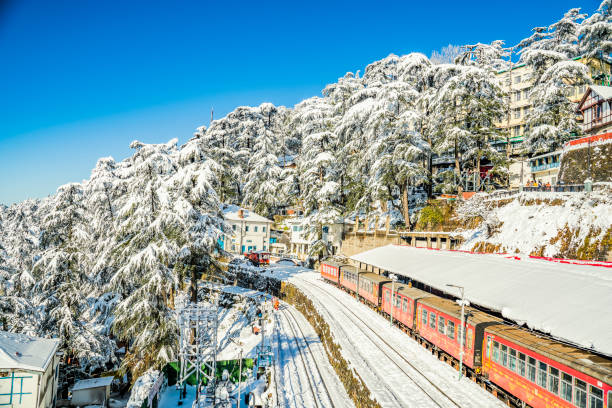
Spiti Valley – A Surreal Cold Desert
No trip to Himachal Pradesh is complete without experiencing the raw beauty of Spiti Valley , often referred to as a cold desert due to its arid landscape and high-altitude terrain. This remote valley is dotted with ancient monasteries, turquoise lakes, and stark yet mesmerizing vistas.
-
Why Visit?
Spiti is unlike any other place in India. Its rugged landscapes, barren mountains, and serene villages create a sense of solitude and wonder. Whether you’re marveling at the architectural brilliance of Key Monastery or standing beside the crystal-clear waters of Chandratal Lake , every moment here feels surreal. -
Must-Visit Spots:
- Key Monastery : Perched atop a hill, this monastery offers panoramic views of the valley and houses centuries-old murals.
- Kibber Village : One of the highest inhabited villages in the world, it’s surrounded by dramatic cliffs and vast open spaces.
- Langza Village : Famous for its fossil-rich terrain and a towering Buddha statue carved into the mountainside.
Spiti Valley is a dream come true for adventurers, photographers, and spiritual seekers alike.
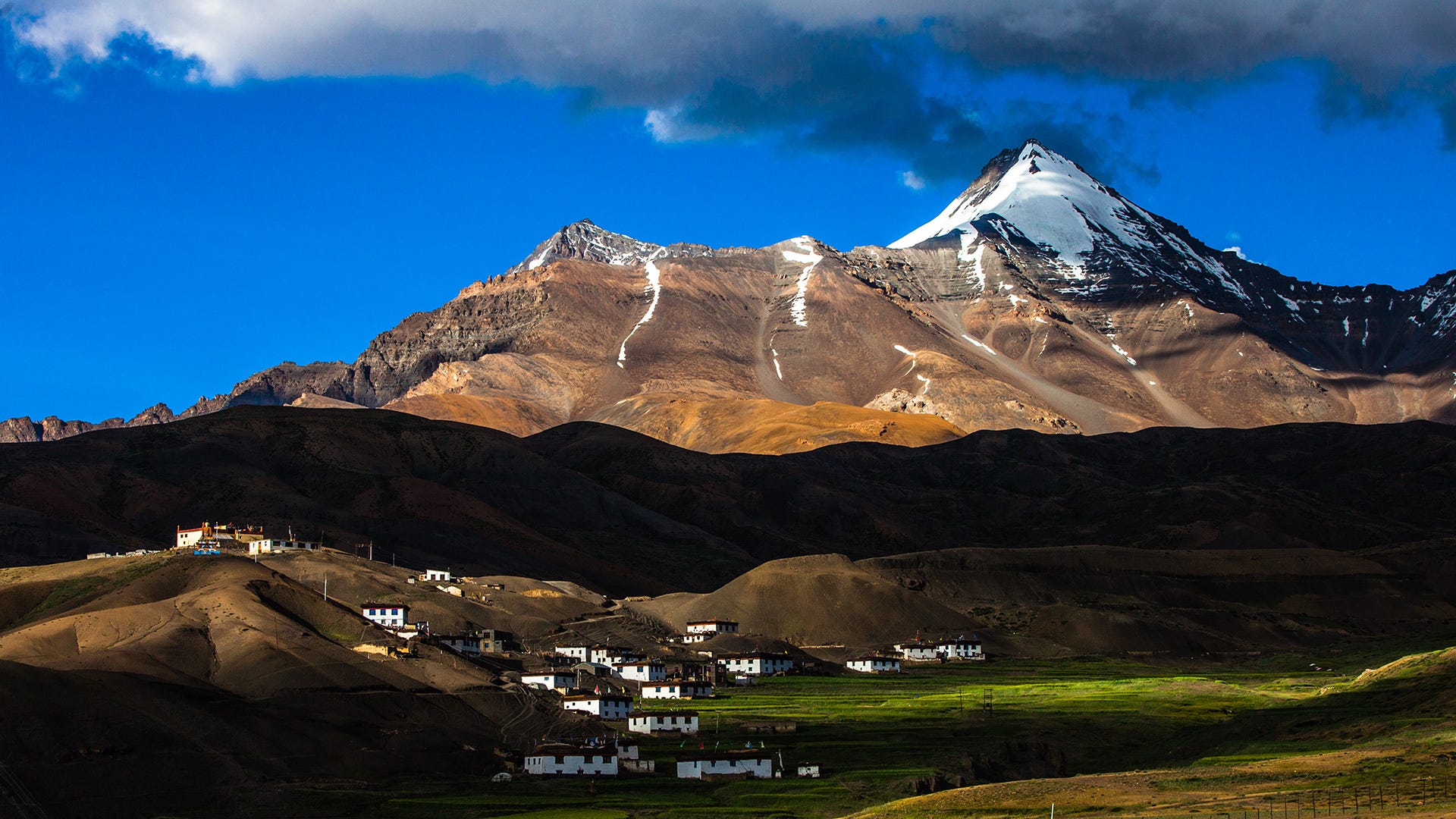
Rampur – A Glimpse into Royal Heritage
Located along the banks of the mighty Sutlej River , Rampur is a historic town steeped in royal heritage and traditions. Once ruled by the Bushahr dynasty, this charming town showcases remnants of its glorious past while offering breathtaking views of the river and surrounding hills.
-
Why Visit?
Rampur provides a glimpse into the rich history of Kinnaur Valley. Its old forts, temples, and traditional wooden houses reflect the region’s deep-rooted culture and craftsmanship. -
Must-Do Activities:
- Visit the Rampur Fort (also known as Raja Ka Kila) to learn about the town’s royal legacy.
- Explore local markets to shop for handwoven shawls, silver jewelry, and other traditional crafts.
- Relax by the Sutlej River and enjoy the tranquil ambiance.
Rampur adds a historical dimension to your Spiti Valley tour, bridging the gap between modernity and tradition.
Chitkul – The Last Inhabited Village Near Tibet
Tucked away near the Indo-Tibetan border, Chitkul is the last inhabited village in the Baspa Valley. Surrounded by snow-capped peaks and lush meadows, this quaint hamlet feels like the edge of the world.
-
Why Visit?
Chitkul is a paradise for nature lovers and trekkers. Its untouched beauty, combined with warm hospitality from the locals, makes it a highlight of any Spiti Valley tour package . -
Must-Do Activities:
- Walk through the village to admire traditional Kinnauri architecture.
- Trek to nearby trails for jaw-dropping views of the Himalayas.
- Capture photos of Mathi Temple, dedicated to the goddess of prosperity.
Chitkul is a reminder of how simple life can be—and how beautiful simplicity truly is.

Kalpa – Picturesque Views of Kinnaur Kailash
Kalpa is another gem in the Kinnaur Valley, offering some of the most picturesque views of the Kinnaur Kailash range . This small village is known for its apple orchards, peaceful monasteries, and stunning sunrises over the mountains.
-
Why Visit?
Kalpa is the perfect place to unwind after days of driving and trekking. Its serene atmosphere and breathtaking scenery make it ideal for quiet reflection or simply soaking in the natural beauty. -
Must-Do Activities:
- Visit Kalpa Monastery , perched on a hilltop with panoramic views of the valley.
- Enjoy a leisurely walk through apple orchards and pine forests.
- Watch the sunrise paint the Kinnaur Kailash peaks in golden hues.
Kalpa is proof that sometimes, the simplest moments are the most magical.
Nako – Serenity at High Altitudes
Nestled at an altitude of 3,600 meters, Nako is a serene village famous for its pristine lake and ancient monastery. Surrounded by barren mountains and colorful prayer flags, this high-altitude destination exudes tranquility.
-
Why Visit?
Nako is a haven for those seeking peace and spirituality. Its remote location and unspoiled surroundings make it a favorite among travelers looking to escape the crowds. -
Must-Do Activities:
- Stroll around Nako Lake , considered sacred by locals.
- Visit Nako Monastery , believed to house relics of Guru Padmasambhava.
- Spend quiet evenings gazing at the starlit sky, free from light pollution.
Nako reminds us of the importance of slowing down and appreciating the present moment.

Reckong Peo – Gateway to Kinnaur
As the administrative capital of Kinnaur district, Reckong Peo serves as a gateway to the region’s many treasures. Nestled amidst towering peaks, this town offers mesmerizing views of the Himalayas and access to several popular trekking routes.
-
Why Visit?
Reckong Peo is more than just a pit stop—it’s a hub for adventure enthusiasts and nature lovers. Its proximity to attractions like Kamru Fort and Rakcham Village makes it a convenient base for exploration. -
Must-Do Activities:
- Hike to Kamru Fort, a medieval structure offering sweeping views of the valley.
- Explore Rakcham Village, known for its charming wooden houses and apple orchards.
- Marvel at the confluence of rivers and majestic peaks from vantage points around the town.
Reckong Peo bridges the gap between urban conveniences and rural simplicity, making it a vital part of your itinerary.
Kaza – The Heart of Spiti
Kaza is the heart and soul of Spiti Valley, serving as its administrative capital and a hub for travelers. This bustling town is surrounded by rugged landscapes, vibrant culture, and iconic landmarks that define the essence of Spiti.
-
Why Visit?
Kaza is central to all major attractions in Spiti, including monasteries, high-altitude villages, and scenic valleys. It’s also a great place to experience the local way of life and savor authentic Tibetan cuisine. -
Must-Do Activities:
- Wander through the lively Kaza Market to shop for souvenirs and try local dishes like thukpa and momos.
- Visit Pin Valley National Park , home to rare species like snow leopards and ibex.
- Interact with locals to learn about their customs and traditions.
Kaza embodies the spirit of Spiti Valley—untamed, welcoming, and full of surprises.
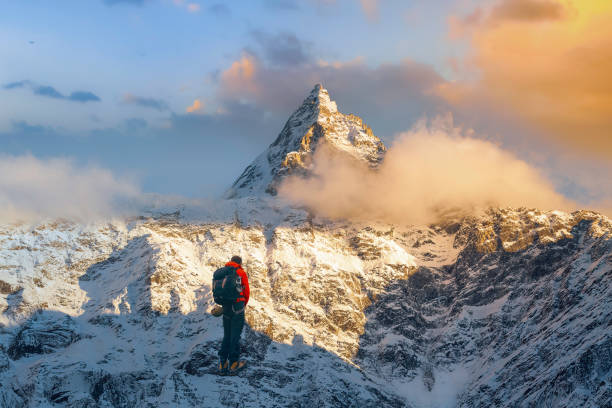
Kibber Monastery – Spirituality at Great Heights
Perched in the village of Kibber , one of the highest inhabited places on Earth, Kibber Monastery is a testament to the resilience and faith of the people who call this harsh terrain home. The monastery itself is modest but radiates a profound sense of peace.
-
Why Visit?
Kibber Monastery represents the enduring presence of Buddhism in Spiti Valley. Its location at such a high altitude adds to its mystique, drawing pilgrims and travelers alike. -
Must-Do Activities:
- Attend morning prayers to witness the monks’ devotion firsthand.
- Explore the village and interact with friendly locals.
- Take short hikes to nearby ridges for unparalleled views of the valley below.
Kibber Monastery is a gentle reminder of humanity’s ability to find solace even in the harshest environments.
Why These Attractions Matter
Each of these destinations—from the colonial charm of Shimla to the rugged beauty of Spiti Valley—offers a unique perspective on what makes Himachal Pradesh so special. Together, they form the backbone of any Spiti Valley tour package , ensuring that travelers get a well-rounded experience filled with adventure, culture, and moments of pure awe.
With thoughtfully curated best Spiti Valley tour packages and Spiti adventure packages , operators like Tourmyholiday ensure that every aspect of your trip is seamless. So pack your bags, bring your sense of wonder, and get ready to explore the wonders of Spiti Valley—one unforgettable attraction at a time.
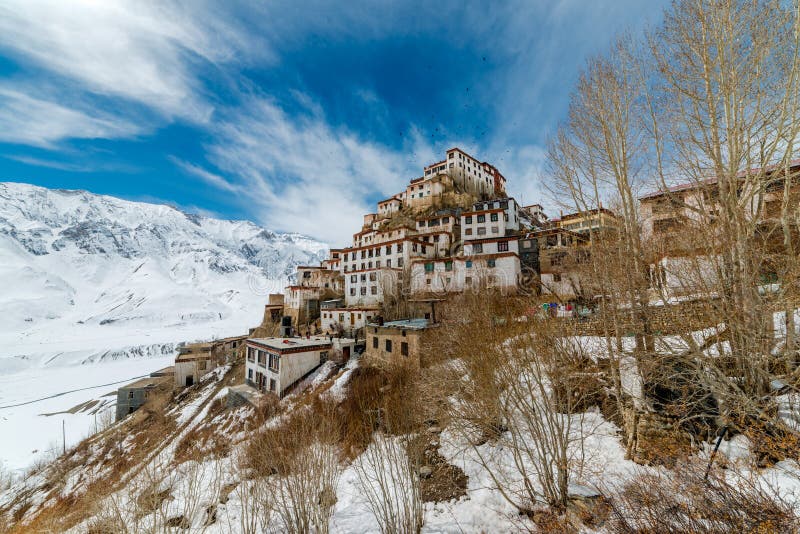
Accommodation in Spiti Valley: Where Comfort Meets Nature
When you book a Spiti Valley tour package , one of the key highlights is the thoughtfully selected accommodation that blends comfort, convenience, and charm. Nestled amidst the stark beauty and serene landscapes of this Himalayan desert, the places you’ll stay at are designed to enhance your connection with nature while ensuring a cozy and memorable experience. Let’s take a closer look at what you can expect when it comes to accommodations in Spiti Valley.
Homestays and Guesthouses: A Home Away from Home
Most Spiti Valley packages include stays at charming homestays or guesthouses that offer a perfect mix of basic amenities and rustic charm. These properties are often located in tranquil settings, surrounded by barren mountains or overlooking picturesque valleys, giving you a true taste of mountain living.
-
Cozy Rooms with Stunning Views : Imagine waking up to the sight of snow-capped peaks right outside your window. Many homestays in Spiti feature rooms with large glass windows or private balconies, allowing you to soak in uninterrupted views of the breathtaking scenery. Whether it’s the first light of dawn or the starlit sky at night, these vistas will leave you spellbound.
-
Warm Hospitality : One of the standout features of staying in Spiti is the warm hospitality extended by the staff. From greeting you with a cup of hot tea upon arrival to ensuring all your needs are met during your stay, the team goes above and beyond to make you feel at home. This personal touch adds an extra layer of comfort to your trip.
-
Bonfire Nights and Cultural Evenings : Most homestays organize bonfire nights under the starlit sky, complete with traditional music, storytelling, and local snacks. It’s a great way to unwind after a day of exploring and bond with fellow travelers. Some properties also host cultural evenings where you can learn about the rich heritage of the region through folk dances and songs.
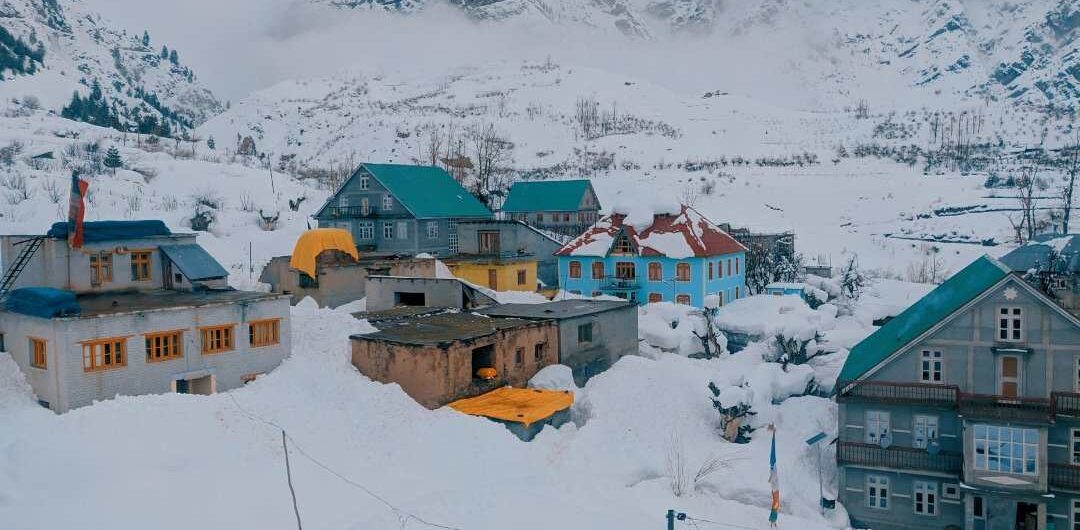
Budget-Friendly Options for Every Traveler
If you’re looking for affordability without compromising on quality, a Spiti Valley tour cost package has got you covered. These packages typically include stays at budget guesthouses or homestays that offer clean, comfortable rooms and basic amenities. While they may not have the luxuries of high-end resorts, they more than make up for it with their authentic vibe and proximity to nature.
-
Homestays for an Authentic Experience : For those who prefer a more immersive experience, opting for a homestay is a fantastic choice. Run by local families, these accommodations provide a glimpse into the daily life and culture of the region. You’ll get to enjoy home-cooked meals made with fresh, locally sourced ingredients, adding a flavorful twist to your culinary journey.
-
Affordable Yet Comfortable : Budget accommodations in Spiti are ideal for backpackers, solo travelers, or groups looking to save on costs. Despite being economical, they ensure a pleasant stay with essentials like hot water, clean bedding, and friendly service. Plus, many of these places are located close to popular attractions, saving you time and travel expenses.
Eco-Friendly Stays: Embrace Sustainable Tourism
For environmentally conscious travelers, some Spiti Valley Adventure packages offer eco-friendly accommodations that align with sustainable tourism practices. These properties prioritize minimal environmental impact by using renewable energy sources, reducing plastic waste, and promoting local craftsmanship.
- Camping Under the Stars : For adventure enthusiasts, camping is another exciting accommodation option available in certain packages. Picture yourself lounging in a tent pitched beside a gurgling stream or atop a hill with panoramic views of the valley below. Camping sites often come equipped with basic facilities like sleeping bags, mats, and shared bathrooms, ensuring a hassle-free yet adventurous experience.
Luxury Resorts for a Touch of Indulgence
If you’re celebrating a special occasion or simply wish to indulge in a bit of luxury, there are premium resorts in Spiti that cater to discerning travelers. These properties boast elegant interiors, spacious suites, and world-class amenities such as spas, multi-cuisine restaurants, and activity centers.
-
Fine Dining with Local Flavors : While luxury resorts offer global cuisines, they also emphasize local flavors. Savor authentic Tibetan dishes prepared with love, paired with stunning views of the surrounding mountains. Whether it’s a hearty breakfast before heading out for the day or a candlelit dinner under the stars, dining here is an experience in itself.
-
Recreational Activities On-Site : Many upscale resorts provide recreational activities like yoga sessions, guided nature walks, and even workshops on traditional crafts. Some even have dedicated play areas for kids, making them suitable for family vacations.
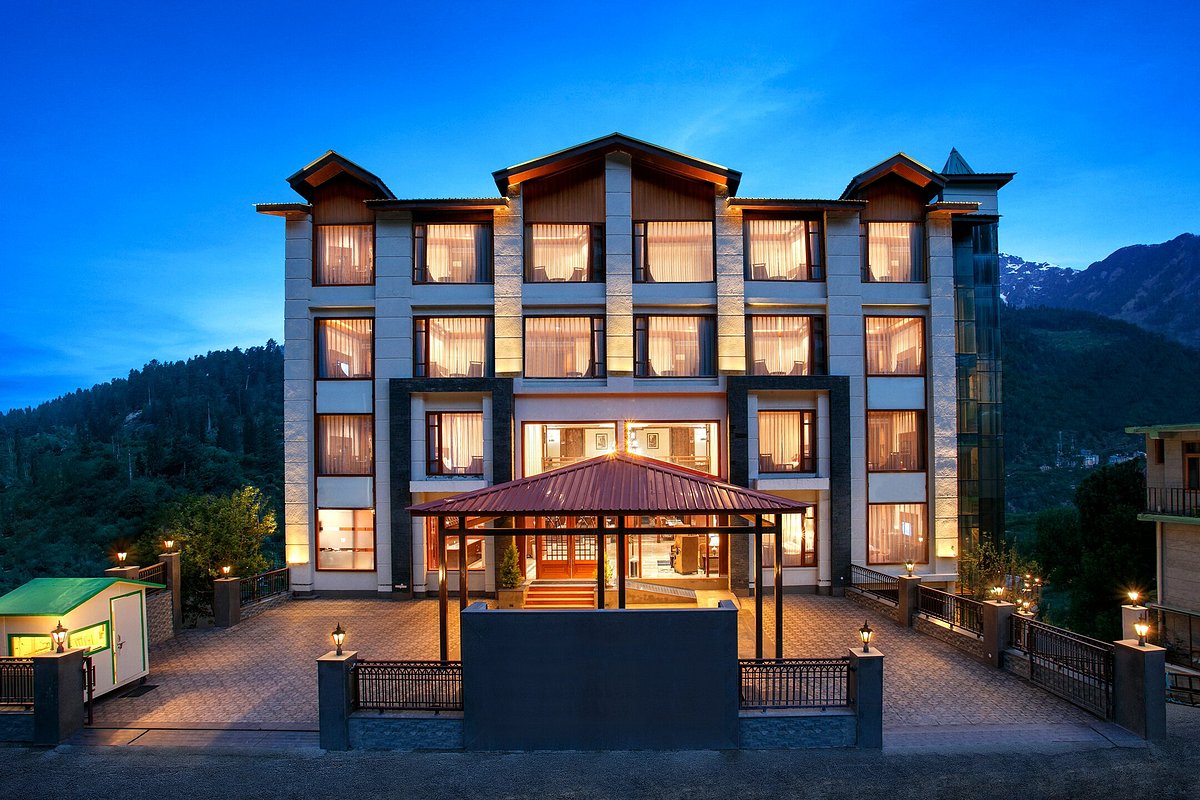
Making Memories That Last
A Spiti Valley tour package isn’t just another vacation—it’s an invitation to immerse yourself in nature’s splendor, challenge your limits, and forge connections that transcend the ordinary. With its stunning landscapes, thrilling adventures, and warm hospitality, Spiti promises an experience unlike any other. So pack your bags, lace up your boots, and get ready to embark on a journey that will leave you inspired, refreshed, and longing to return.
Spiti Valley Tour: Unlock the Best Time to Visit for an Unforgettable Adventure"
When planning your Spiti Valley tour , timing is everything. The best time to visit Spiti depends on what kind of experience you’re looking for—whether it’s the thrill of traversing snow-covered passes, basking in the vibrant colors of summer, or soaking in the golden hues of autumn. Let’s dive into the ideal seasons for exploring this mystical valley and how each offers a unique perspective on its breathtaking landscapes.
Summer (May to June): Blooming Beauty and Accessibility
The summer months are arguably the most popular time to visit Spiti Valley. During this period, the snow begins to melt, making the high-altitude roads accessible and the weather pleasant. Temperatures range from 10°C to 25°C, creating perfect conditions for trekking, camping, and road trips.
-
Why Visit in Summer?
This is the season when Spiti truly comes alive. The valleys are lush with greenery, rivers swell with glacial meltwater, and wildflowers bloom across the landscape. Popular activities like visiting monasteries, exploring remote villages, and enjoying outdoor adventures are at their peak during these months. -
Highlights of a Summer Visit:
- Drive through scenic routes like the Kunzum Pass and Rohtang Pass without worrying about heavy snowfall.
- Attend local festivals such as the Losar Festival , which celebrates the Tibetan New Year with vibrant rituals and dances.
- Enjoy clear skies for stargazing and photography, especially around iconic spots like Chandratal Lake and Key Monastery.
Summer is perfect for travelers who want to experience Spiti in all its glory while avoiding extreme weather conditions.

Monsoon (July to August): A Serene Escape
Unlike the rest of India, Spiti Valley remains relatively dry even during the monsoon months due to its location in a rain shadow area. However, occasional showers can occur, adding a fresh sheen to the already stunning scenery.
-
Why Visit in Monsoon?
If you prefer fewer crowds and don’t mind unpredictable weather, this is the time to go. The valley retains its stark beauty, and the muted tones of the desert-like terrain contrast beautifully with patches of greenery brought by light rainfall. -
Highlights of a Monsoon Visit:
- Experience quieter trails and roads, allowing for a more peaceful exploration of the region.
- Witness waterfalls cascading down rocky cliffs, a rare sight in this otherwise arid valley.
- Capture dramatic cloud formations over the mountains, offering photographers unique opportunities.
Monsoon visits are ideal for those seeking solitude and a chance to connect deeply with nature.
Autumn (September to October): Golden Hues and Crisp Air
Autumn is another fantastic time to embark on a Spiti Valley adventure . As the summer crowds thin out, the valley takes on a golden hue, with cooler temperatures ranging from 5°C to 20°C. This season strikes a balance between accessibility and tranquility.
-
Why Visit in Autumn?
The crisp air and clear skies make autumn perfect for outdoor activities like trekking, biking, and camping. Additionally, the harvest season brings a sense of celebration to the villages, giving you a glimpse into local life. -
Highlights of an Autumn Visit:
- Marvel at the changing colors of the sparse vegetation against the backdrop of barren mountains.
- Participate in cultural exchanges with villagers during the apple harvest season—a significant event in Kinnaur and Spiti.
- Enjoy uninterrupted views of the Himalayan peaks, which are often clearer during this time.
Autumn is perfect for couples, solo travelers, and families looking for a mix of adventure and relaxation.
Winter (November to April): A Snowy Wonderland
For the ultimate offbeat experience, consider visiting Spiti Valley in winter. While many roads remain closed due to heavy snowfall, certain areas like Kaza and Tabo are still accessible, offering a surreal, otherworldly charm.
-
Why Visit in Winter?
Winter transforms Spiti into a silent, snow-covered paradise. With hardly any tourists around, you’ll have the valley almost entirely to yourself. Temperatures can plummet to -20°C, but the pristine beauty and serene atmosphere make it worth braving the cold. -
Highlights of a Winter Visit:
- Explore frozen lakes like Chandratal and Dhankar, where the icy surfaces reflect the surrounding peaks like mirrors.
- Witness traditional winter lifestyles in remote villages, where locals rely on age-old practices to survive the harsh conditions.
- Experience the magic of snow-laden monasteries and prayer flags fluttering in the icy winds.
Winter is perfect for adventurers and photographers seeking solitude and unparalleled natural beauty.

Choosing the Right Season for Your Spiti Valley Tour Package
Each season in Spiti Valley offers something distinct, ensuring there’s no wrong time to visit—if you know what you’re looking for. Whether you opt for the vibrancy of summer, the serenity of autumn, the quietude of winter, or the unique charm of monsoon, a best Spiti Valley tour package will help you make the most of your trip.
So, pack your bags according to the season, prepare for the adventure of a lifetime, and let Spiti Valley work its magic on you. After all, every moment here is a story waiting to be told!
Frequently asked questions about Spiti
Where is Spiti Valley located?
Spiti Valley is situated in the northeastern part of Himachal Pradesh, India, and lies in the rain shadow of the Himalayas, bordering Tibet to the east. The valley is part of the Lahaul and Spiti district, known for its remote and rugged terrain.
What is the geography of Spiti Valley like?
Spiti Valley is a high-altitude cold desert with an average elevation ranging from 3,500 meters (11,500 feet) to 4,500 meters (14,800 feet) above sea level. The region is characterized by barren hills, deep gorges, and the Spiti River flowing through its midst.
What is the climate of Spiti Valley?
Spiti experiences a cold desert climate. Winters are extremely harsh, with temperatures dropping below freezing, and heavy snowfall often closes roads. Summers are short and relatively mild, making the period from mid-May to mid-October the ideal time to visit.
When is the best time to visit Spiti Valley?
The best time to visit Spiti Valley is from June to September when the weather is pleasant, and most roads are open. This period allows for easier access to remote villages and attractions like Chandratal Lake and Key Monastery.
How do I reach Spiti Valley?
Spiti can be reached via two main routes:
-
Shimla Route: Travel from Shimla to Kaza through Reckong Peo, covering approximately 785 km.
-
Manali Route: Travel from Manali to Kaza via Rohtang Pass and Kunzum Pass, covering about 750 km. The Manali route is typically open from June to September.
Do I need permits to visit Spiti Valley?
Indian nationals do not require permits to visit Spiti Valley. However, foreign nationals must obtain an Inner Line Permit (ILP) due to its proximity to the Tibetan border. Permits can be obtained from the District Magistrate’s office in Shimla, Kullu, or Reckong Peo.
What types of accommodations are available in Spiti Valley?
Accommodation options range from basic guesthouses and homestays in villages to more comfortable hotels and eco-resorts in Kaza, the largest town in the region. Camping is also popular, with designated campsites offering stunning views of the surrounding mountains and starry skies.
What are the main attractions in Spiti Valley?
Key attractions include:
-
Monasteries: Key Monastery, Tabo Monastery, and Dhankar Monastery.
-
Lakes: Chandratal Lake and Dhankar Lake.
-
Villages: Langza, Hikkim, and Komic.
-
Natural Sites: Pin Valley National Park and Chicham Bridge.
How much does a trip to Spiti Valley cost?
The cost of a trip varies based on factors like duration, accommodation choices, and activities. On average, budgeting around ₹1,500 to ₹2,500 per person per day is reasonable, covering accommodation, food, and local travel.
What should I pack for a trip to Spiti Valley?
Pack warm clothing, including thermal wear, jackets, gloves, and hats, regardless of the season. Sturdy trekking shoes, sunscreen, sunglasses, and a first-aid kit are also essential. If traveling during the monsoon, include rain gear.
Is Spiti Valley safe for travelers?
Spiti is generally safe for travelers. However, the high altitude can lead to altitude sickness. It's advisable to acclimatize properly, stay hydrated, and avoid strenuous activities initially.
Are ATMs available in Spiti Valley?
ATMs are available in Kaza and a few other towns. However, it's advisable to carry sufficient cash, especially when traveling to remote villages where ATM facilities may be limited.
What are the road conditions like in Spiti Valley?
Roads are generally narrow, winding, and can be rough, with occasional landslides during the monsoon season. It's recommended to travel in sturdy vehicles and with experienced drivers.
Can I rely on public transport in Spiti Valley?
Public transport is limited and may not adhere to strict schedules. Hiring a private taxi or joining organized tours offers more flexibility and convenience for exploring the region.
What are some cultural considerations when visiting Spiti Valley?
Respect local customs and traditions. Dress modestly, especially when visiting monasteries. Seek permission before photographing locals or entering religious sites. Engaging with local people respectfully is key to a positive experience.
